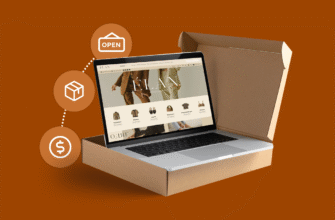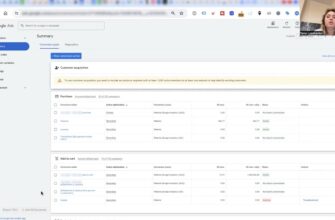- What is a marketplace?
- How do marketplaces work?
- What are the advantages of marketplaces?
- Are there any disadvantages to trading through a marketplace?
- What types of marketplaces are there?
- By product range coverage
- By business segment
- By product type
- Who benefits most from trading on marketplaces?
- How does a marketplace differ from an aggregator?
- How to start selling on the marketplace?
- Which marketplaces are the most popular in Ukraine?
- Rosette
- Prom.ua
- Bigl.ua
- Allo.ua
- Shafa
- Epicenter
- Which marketplaces operate worldwide?
- Amazon
- AliExpress
- eBay
- Uber
- Etsy
- Walmart
- How to choose a marketplace to launch your business?
Marketplaces are rapidly gaining popularity in the field of e-commerce not only in Ukraine but also around the world. These online platforms open up new opportunities for both sellers and buyers. They serve as a convenient meeting point where manufacturers, distributors, and small businesses can present their products to a wide audience, and customers can access a huge variety of goods and services.
The idea of a marketplace has its roots in traditional markets and fairs, which have long served as places for exchange. With the development of internet technology, this concept has been transferred to the online environment.
Today, it is not only about facilitating the process of e-commerce, but also providing additional security for transactions, a wider choice, and fostering healthy competition between sellers. Thus, today more than half of global online sales are already conducted through marketplaces.
How many calls and sales will I get by ordering contextual advertising from you?
I need to calculate the conversion of my website Describe
the task
in the application
Calculate potential ad revenue Google
contextual advertising calculator
What is a marketplace?
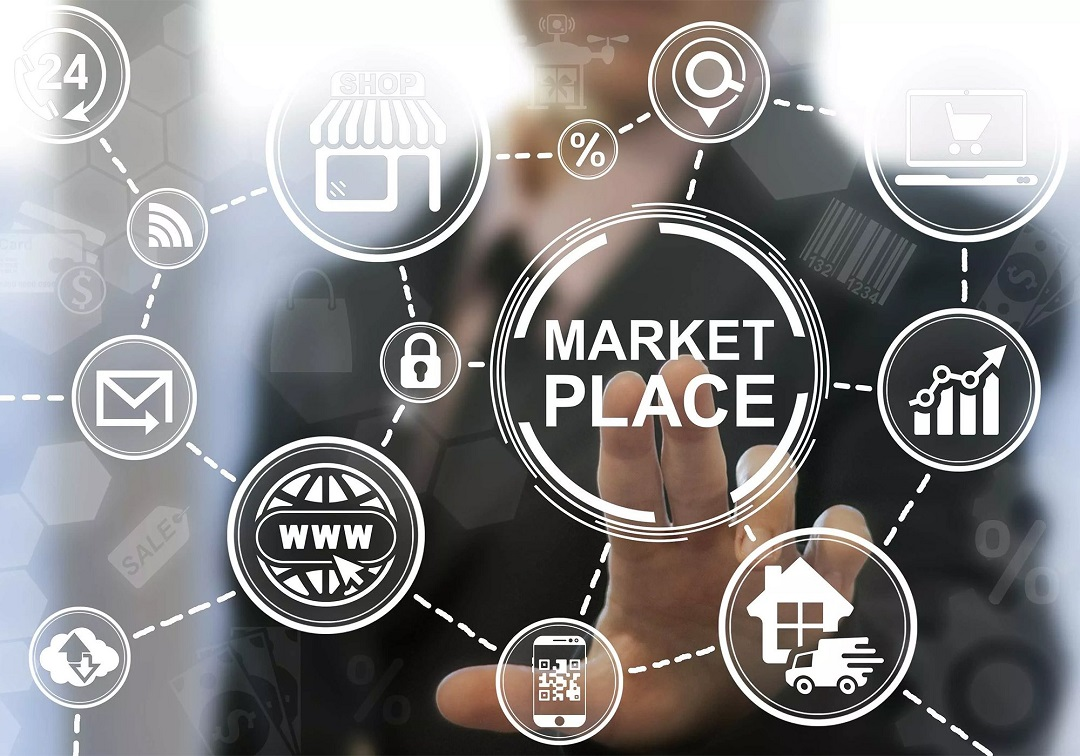
A marketplace is an online platform that brings together many sellers and buyers in one place. It is a kind of virtual shopping center where various online stores offer their services.
For buyers, this is a convenient way to find the right item at a good price. Instead of searching several online stores, you can simply visit one website and use convenient search filters. In addition, there are often uniform delivery and return conditions, loyalty programs, and discounts, which makes shopping even more attractive.
For sellers, this is an opportunity to reach a huge audience of potential customers without having to spend their own money on creating and advertising their online store. By placing offers on popular platforms such as Rozetka, Prom.ua, Amazon, or eBay, even small businesses can quickly start selling products online and scale up rapidly.
For example, in March 2025, the Rozetka website was visited more than 35 million times. Imagine how much time and money it would take for a small store to attract even a fraction of that traffic on its own!
How do marketplaces work?
Externally, the structure of such a platform resembles an online store with a catalog divided into categories, a shopping cart, and other familiar elements. However, there are also significant differences.
First and foremost, marketplaces offer a huge selection—hundreds of thousands of items in a wide variety of categories, from clothing and electronics to building materials and auto parts. However, none of this belongs to the platform itself, but rather to numerous merchants who use the marketplace as a technical base for their activities.
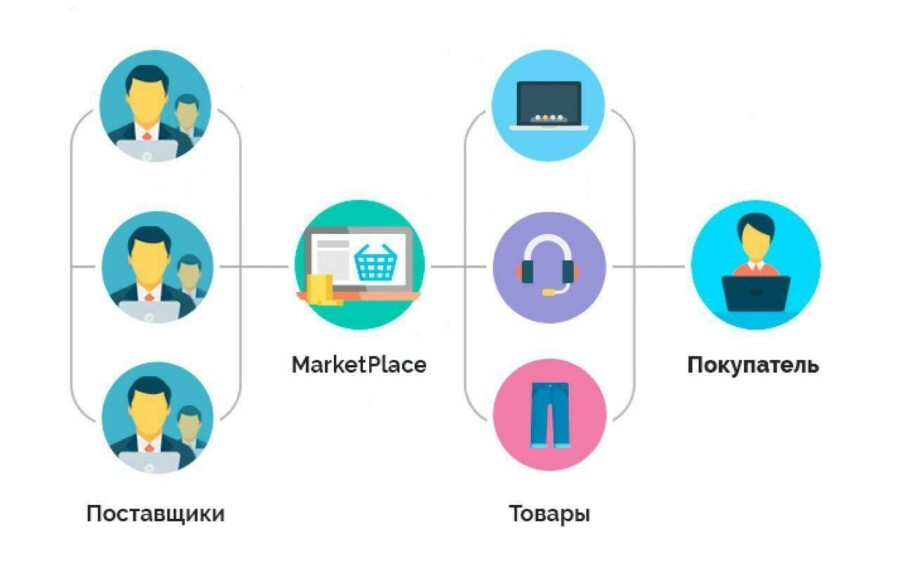
The principle behind the marketplace is quite simple. Sellers register, receive a personal account where they can manage their products, process incoming orders, and even track statistics. The marketplace provides all the necessary tools — from uploading products to the catalog to integration with payment systems. In fact, the personal account replaces a separate website.
Important! Sellers can only operate within the framework of a specific platform. It will not be possible to attract buyers from alternative sources — you will have to rely exclusively on marketplace traffic. You will have to pay a commission on each order for using the resource, although adding products to the catalog is usually free.
What are the advantages of marketplaces?
- Smooth operation. When starting to work with the marketplace, merchants receive a ready-made set of requirements for content quality, customer service, and complaint handling. This is in the interests of the platform itself, as it directly affects its revenue. Sellers, in turn, gain useful experience in e-commerce and learn how to organize their work properly.
- Quick start. You don’t even need to have your own website to start trading. All you need to do is register a legal entity, fill out a profile, and you can start your business. If all the requirements are met, an entrepreneur can start making a profit from day one.
- A comprehensive approach. Marketplaces take on most of the business tasks—from storing products in their warehouses to organizing transportation and pickup. All the seller has to do is provide the products and create high-quality product cards.
- Traffic. Marketplaces invest significant resources in marketing. Although this does not guarantee a steady stream of orders for every seller, working on the platform makes it much easier to attract customers. Rozetka and similar sites consistently rank at the top of search results and generate a lot of internal traffic, allowing you to sell without additional advertising costs.
- Access to foreign markets. Popular international marketplaces such as Amazon or AliExpress open the way to a global audience. All issues related to logistics, payment acceptance, and customs clearance have already been resolved by the platform, allowing you to focus on developing your business.
- Cost savings. On most marketplaces, registration and adding your product range are completely free. There is no need to hire programmers or designers, or spend money on website development and maintenance.
Are there any disadvantages to trading through a marketplace?
- High competition. On the marketplace, you are surrounded by hundreds and thousands of other online stores offering similar solutions. Often, the only way to stand out is to offer the lowest price. This leads to a decrease in margins and overall business profitability. Therefore, you will have to calculate the economics of your product in advance, taking into account commissions and the competitive environment.
- The complexity of developing your own brand. On the marketplace, you are one of many sellers. Buyers often do not pay attention to who exactly they bought a particular product from, but associate the purchase with the brand of the platform itself. For example, if someone buys an iron on Rozetka, they will consider that they placed an order “on Rozetka” rather than with a specific seller. This makes it difficult for merchants to develop their own brand. Unique packaging, inserts with your branding, and other ways to make yourself memorable can help here.
- Dependence on platform rules. When working on a marketplace, you play by someone else’s rules. And these rules sometimes change. For example, the platform introduces new requirements for photos, and you have to quickly reshoot your entire product range. Or the search algorithm changes, and your listings temporarily disappear from search results. Even a couple of negative reviews can seriously affect sales, because the marketplace is interested in customer loyalty and will take their side.
- Risk of account suspension. Marketplaces take service quality seriously, so they closely monitor sellers’ performance. Violations of rules, poor performance, low ratings, and other issues can lead to account suspension. Even the slightest deviation from standards can destroy your business.
- No access to customer data. Unlike your own online store, you do not receive your customers’ contact details. This prevents you from building long-term relationships with them, sending out newsletters, or bringing people back with personalized offers.
- Commissions and fees. You have to pay for any service. In addition to a fixed percentage of each sale, you will have to pay various fees for product storage, returns processing, and marketing. Depending on the product category and the platform’s policy, the total fees can sometimes reach 15-20% of the order amount.
- Reputational risks. Your business is inextricably linked to the reputation of the platform itself. And if there are problems with delivery or payment on the website, this will directly affect you. Even impeccable service on your part will not protect you from negativity. Unfortunately, you have no control over these processes. All you can do is keep a close eye on the news and be ready to respond quickly to any unforeseen circumstances.
- The difficulty with repeat sales. Even if a person liked your product, next time they will most likely search for it through the marketplace search engine rather than specifically seeking you out. So you have to fight for each customer again and again.
What types of marketplaces are there?
Different types of marketplaces differ from each other according to the following criteria.
By product range coverage
- Horizontal. These platforms offer everything from socks to televisions. Prominent examples include Amazon, AliExpress, and Rozetka. They are highly popular due to the ability to purchase everything in one place and compare several price offers from different sellers.
- Vertical. Niche platforms focused on a specific product category, offering a deeper range of products, greater expertise, and additional services. For example, Citrus specializes exclusively in gadgets and electronics. Sellers here compete not with just anyone, but with relevant market players.
By business segment
- B2B (business-to-business). Companies use such services to find suppliers, compare prices, and conclude contracts. Prom.ua used to operate under this model, but now it is more focused on retail buyers.
- B2C (business to consumer). The classic, most common, and easiest-to-understand format. Most of the big players in the market—Rozetka, Amazon, AliExpress—use this model.
- C2C (consumer to consumer). A format that is essentially similar to a bulletin board, where sellers and buyers are individuals. People sell used or handmade items to each other. However, many C2C marketplaces eventually begin to attract entrepreneurs as well.
By product type
- Merchandise. The most familiar format, where physical items are sold. These can be huge megamalls like Amazon or AliExpress, as well as niche platforms specializing in certain product categories — electronics, clothing, household goods.
- Services. These platforms do not sell goods, but rather services. The most notable examples are Booking.com for hotel reservations, Upwork for finding freelancers, and Uber for calling taxis. Here, the platform acts as an intermediary between those who provide the service and those who seek it.
- Informational. Aggregate various content—videos, audio, courses, articles. This format is relevant for online schools, bloggers, and experts who want to package their knowledge into a commercial product. The most famous examples are YouTube, Spotify, and Udemy.
- Crowdfunding. Suitable for raising funds for various projects. These include Kickstarter, Indiegogo, and Boomstarter, which operate on a pre-order model: authors present their ideas, and people invest money in their implementation if they like them.
Who benefits most from trading on marketplaces?
In essence, anyone can sell on such platforms, but they are most beneficial for:
- Small businesses. Small companies can quickly expand their customer base and increase brand awareness without the expense of creating their own online store. Access to a multi-million audience provides a powerful boost to sales.
- Private sellers. If you want to sell used or unique items, a marketplace is also a good option for you. Platforms such as eBay or Etsy are ideal for selling vintage items or handmade products to connoisseurs of exclusive goods.
- Companies seeking global expansion. For example, AliExpress provides everything you need to trade worldwide — from localizing product descriptions to helping with logistics and customs clearance. It’s a great way to scale up without unnecessary risks and costs.
How does a marketplace differ from an aggregator?
- How it works. A marketplace is a full-fledged trading platform where buyers can select products, pay for them, and arrange delivery. An aggregator, on the other hand, is a catalog with prices and descriptions from various online stores, which buyers will need to visit if they wish to make a purchase.
- Responsibility for the transaction. In the first case, you are responsible for fulfilling orders. If the seller violates the terms and conditions, the platform will compensate the customer for the damage. In the second case, the buyer enters into a contract with the seller directly. Accordingly, all claims go directly to the seller.
- Conditions. Marketplaces set strict requirements for product range, prices, delivery times, packaging, and customer communication. On aggregators, sellers have more freedom in shaping their offerings.
- Cash flow control. On marketplaces, goods are purchased directly on the platform, which then transfers the money to the seller after deducting its commission. When working through an aggregator, the money goes directly to the seller, and the aggregator receives its share either from the buyer for clicking on the link or from the seller for displaying its offers in the catalog.
- Marketing. Marketplaces themselves attract target audiences and sometimes provide tools for promotion, such as advertisements in the platform catalog, loyalty programs, etc. Sellers on aggregators, on the other hand, must attract customers on their own.
How to start selling on the marketplace?
- Read the rules. Everywhere has its own requirements for content formatting — product names, photos, descriptions, characteristics. Study these rules and make sure your offers comply with them. For example, photos must be of a certain size and quality, and names must be in a specified format.
- Conduct market analysis. Before you start selling, you need to understand what is in demand and can bring good profits. To do this, study the information on the platform itself — which categories and product items are most popular, what is in high demand. Use this data as a guide when selecting your product range.
- Evaluate your competitors. Select 3-5 strong players in your niche and analyze their offerings. Pay attention to prices, specific positions, promotions, ratings, and reviews. Think about how you can stand out from them and what unique features you can offer.
- Read reviews. Comments are a valuable source of information. They can help you understand how satisfied people are, what their preferences and needs are. Use them to determine your product range and sell only products with a good reputation and high demand.
- Register a legal entity. Marketplaces take documentation seriously and usually require sellers to register as sole proprietors or legal entities. Study the requirements and obtain the necessary status. It is usually easier to work on several platforms through a LLC — not all of them cooperate with individuals or sole proprietors.
- Create a seller account. When registering, you will need to provide information about your company, including its name, contact details, bank details, and tax information. If you plan to sell products that require a license (such as alcohol or medicines), prepare all the necessary permits in advance. You can upload them via your personal account.
- Fill out the product cards. It is best to include a detailed description with all characteristics—sizes, colors, materials, etc. Make sure you have high-quality photos that meet the platform’s requirements for format and resolution.
- Deposit money into your account. These funds will be used to pay commissions. Different services have different rates and terms, so please read them carefully in advance. Make sure that your account always has sufficient funds, otherwise sales will be suspended.
Which marketplaces are the most popular in Ukraine?
More and more Ukrainians today prefer to shop online. In response to this, new marketplaces are appearing on the market, and existing ones are expanding. Below is a list of the most popular platforms in Ukraine.
Rosette
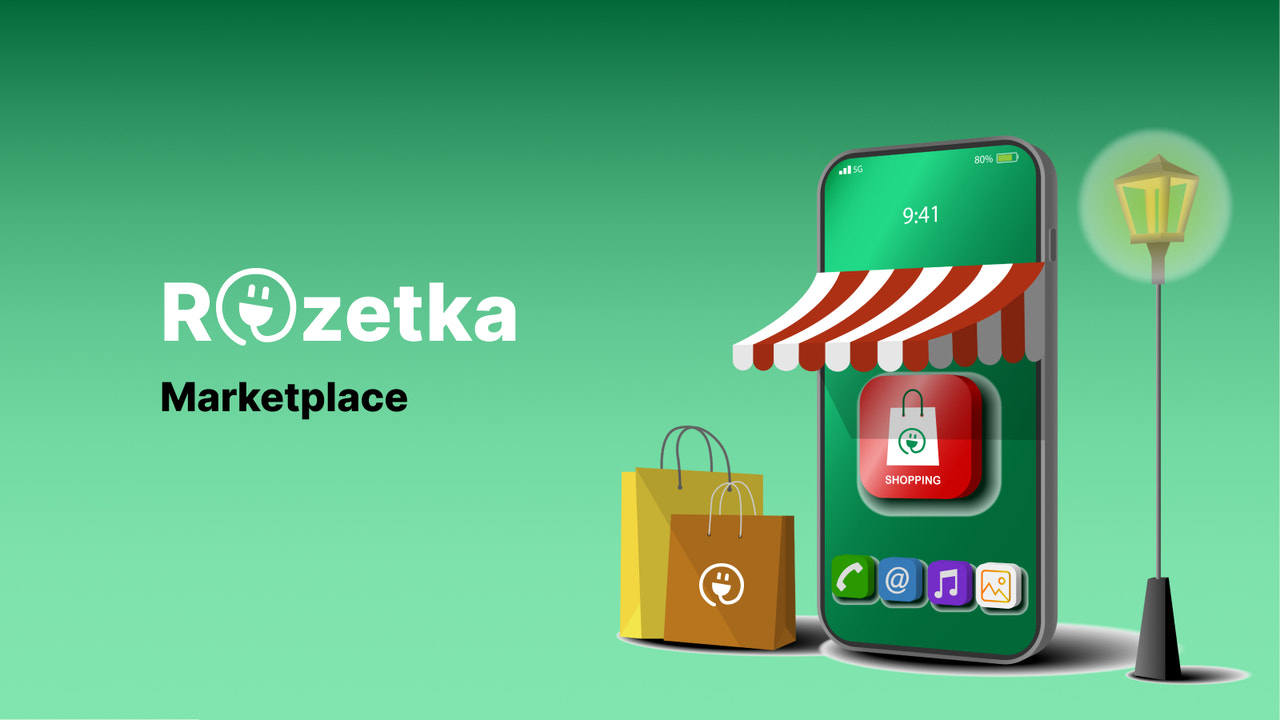
Rightfully considered the leader of Ukrainian online commerce. Rozetka was founded in 2005 as a regular electronics store, but today it is a network giant with more than 3.9 million items in its assortment of various categories — from household appliances and clothing to cosmetics and food.
The site is visited by around 2.5 million users every day. This is not surprising, given that over the past 19 years, the company has grown from a niche online store into a diversified retail chain that attracts people from all over the country.
For the convenience of its visitors, Rozetka is developing a network of offline pickup points — there are now 413 of them throughout Ukraine. And let’s not forget about Rozetka Pay, the company’s own payment system. It allows customers to pay for purchases directly in the platform’s interface, without having to enter their card details on third-party resources.
Prom.ua

Prom.ua offers over 100 million items from 55,000 online stores across Ukraine for both businesses and private customers. Every month, Prom.ua attracts an impressive audience of 52 million people, with the number of orders reaching 2.5 million.
Sellers here can create a website under their own domain name. This allows them to trade simultaneously on their own website and in the general catalog, significantly expanding their reach. In addition, a mobile app is provided for convenient shopping.
Although Prom.ua offers products for virtually any need, the platform is primarily focused on the B2B segment. Small and medium-sized businesses will appreciate the wide selection of industrial equipment, office supplies, raw materials, and more.
Bigl.ua

This is a relatively new marketplace closely linked to the Prom.ua platform. To start working with an audience of 10 million people and become one of 40,000 online stores on Bigl.ua, you need to complete the initial registration on Prom. This will give you access to both services.
A distinctive feature of Bigl is that it allows you to sell products not only to companies but also to private individuals. You can even sell handmade goods here, which opens up additional opportunities for artisans and craftspeople.
Important! Bigl.ua pays special attention to the quality of the products sold and the service provided. All sellers and their products undergo thorough verification. To trade on the platform, you need to maintain a high level of service — receive at least 80% positive feedback with a maximum of 15% negative feedback.
Allo.ua

The company specializes in electronics and gadgets. Over the course of its 32 years of existence, Allo.ua has opened nearly 300 physical stores and created a successful online platform that sells more than 5.5 million gadgets annually.
The product list includes not only traditional electronics such as smartphones, laptops, and tablets, but also a variety of related items, from cases and headphones to smart home devices. In addition, the list of categories is constantly expanding, with the addition of products for children, gardening, cars, home improvement, and travel.
How many calls and sales will I get by ordering contextual advertising from you?
I need to calculate the conversion of my website Describe
the task
in the application
Calculate potential ad revenue Google
contextual advertising calculator
Today, over 2,000 online retailers post their offers on Allo.ua, and the monthly audience reaches 10 million users. Such popularity is due not only to the wide selection, but also to competitive prices, regular promotions, and sales.
Shafa

Here you will find branded clothing, shoes, bags, and accessories at affordable prices. Every month, between 5.9 and 7.7 million visitors come to the site to buy or sell used clothing from well-known brands such as Zara, Nike, Adidas, H&M, and many others. Discounts here often reach 90%, making Shafa an attractive platform for bargain hunters.
In addition to a wide selection and competitive prices, Shafa has a strong community of merchants, and its user-friendly interface makes navigation simple and allows you to find what you’re looking for much more easily.
Epicenter
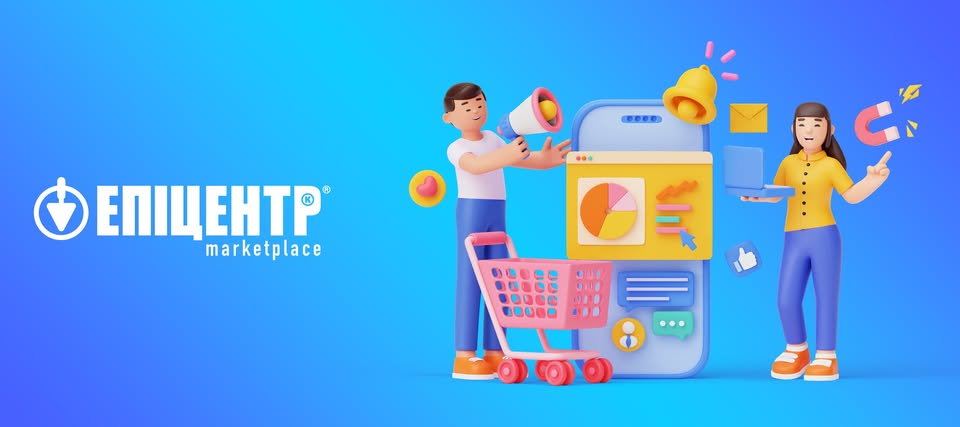
Another Ukrainian retailer that is successfully developing its trading platform alongside its traditional offline business. Initially, the company specialized in building materials and repair goods, but in 2020 it launched a full-fledged marketplace based on the epicentrk.ua website.
Although the marketplace is part of the main website, it is promoted by a separate team of specialists. Thanks to this, it is growing rapidly: the monthly audience of epicentrk.ua reaches 25 million visitors, and the number of merchants has already exceeded 7,000 and continues to increase by 300-350 every month.
Although at this stage Epicenter’s approach has some limitations in terms of working with product items, accepting payments, and processing applications, these are gradually being eliminated as the platform develops. On the other hand, relatively low competition (compared to other popular platforms) opens up good opportunities for novice entrepreneurs.
And let’s not forget about the absence of subscription fees. Sellers pay a fixed commission only for closed applications, and its amount is specified in the contract. In addition, Epicenter provides its own call center, which helps to process applications quickly.
Which marketplaces operate worldwide?
Now that we’ve covered local venues, let’s take a look at some that are known around the world.
Amazon
The world’s largest marketplace, which has gained popularity thanks to its huge selection of products, fast delivery, and high level of customer service. Founded by Jeff Bezos in 1994, Amazon quickly became a true giant in the field of online commerce.
The catalog features millions of products, ranging from electronics, books, and clothing to household appliances and food. Everyone can find what they need here at attractive prices. As a result, the site attracts 4.72 billion visitors per year.
This platform operates in North America, Europe, and Asia, delivering worldwide. However, it should be noted that the interface has not yet been translated into Russian or Ukrainian, which significantly reduces its usability for visitors from Ukraine.
AliExpress
It was created in China in 2010 and has since expanded its presence to 230 countries. The platform’s website has been translated into 18 languages and attracts around 400 million users every month.
All merchants note a fairly reasonable commission, which amounts to only 5-8% of the transaction amount. However, it should not be forgotten that Ali has quite strict requirements aimed at reducing the risk of fraud. If the customer proves dishonest behavior on the part of the merchant within two months of the purchase date, the administration is highly likely to take their side.
eBay
Since its inception in 1995, eBay has positioned itself as a site for collectors and connoisseurs of rare items, where the exchange and trade of unique exhibits flourished. Today, you can easily find a wide variety of products here.
There are no strict requirements on eBay, and posting ads is quite convenient. The first 50 items can be listed completely free of charge, and a nominal fee of 50 cents is charged for all subsequent items. However, you will have to take into account that you will have to pay extra for priority placement and other advertising. In addition, eBay also charges a commission, the amount of which depends on the product category.
Also, depending on the merchant’s status and category, the platform applies limits on the number of ads that can be posted. Despite this, eBay’s popularity continues unabated — 1.21 billion people visit the service every year.
Uber
A taxi-hailing service founded by Americans Travis Kalanick and Garrett Camp in 2009. By 2010, Uber had already entered the international market and is now the undisputed leader in its niche.
With the help of a smartphone app, you can easily call a free car nearby, track its movement to the specified point, and pay for the ride. No calls to the dispatch center and no waiting on hold — everything is at your fingertips on your mobile phone.
Uber is available in more than 450 countries around the world. Interestingly, in most cases, drivers use their own cars rather than corporate transport. Uber’s success has inspired many entrepreneurs to create similar services in other areas — now, through similar apps, you can find tutors, personal drivers, cleaners, and many other specialists.
Etsy
This platform is focused on trading artworks, handmade goods, jewelry, and antiques. In addition, you can post creative tools and supplies, stickers, posters, and souvenirs here.
Sellers should keep in mind that Etsy charges a commission of 6.5% on each item sold, as well as 20 cents for each item added. Despite this, the service is hugely popular — in 2022, 7.47 million online stores and 95.08 million customers registered here.
Interesting fact! Until recently, it was impossible to create new stores on Etsy from Ukraine due to difficulties with accepting payments. However, in October 2023, the situation changed — the Etsy Payments service began operating in Ukraine, allowing transactions to be accepted in dollars and euros.
Walmart
Although this marketplace was originally created as an online store, after some time the site owners opened their doors to third-party sellers. Today, Walmart has offices in 24 countries, although the parent company is based in the United States.
However, Ukrainians will be pleased to know that Walmart is open for business to them as well. What’s more, it’s entirely possible to connect your Shopify online store to the marketplace.
When working with Walmart, focus primarily on the American target audience. This service is most popular in the US, where it covers 6.3% of the local online retail market. In addition, there is already a well-established delivery system in place for the United States.
Compared to the giant Amazon, competition here is somewhat lower. In addition, there is no monthly subscription fee and no paid subscription system. The commission, in turn, varies from 8% to 15%.
How to choose a marketplace to launch your business?
When choosing a platform to add your products, pay attention to:
- Commission size. It varies across different marketplaces and can reach 22% or more. Take these costs into account, as well as marketing expenses, to assess the potential profitability of the partnership.
- Features of withdrawing funds. Usually, payment for orders is not sent directly to the seller, but to the service’s account. Only after some time does the service transfer the funds to the seller, minus a commission. The time it takes to withdraw funds usually varies from one day to one week.
- Additional services. These include storage of goods in the platform’s warehouses, order processing, and transportation. These options will greatly simplify your work, so we recommend connecting them whenever possible.
- Requirements for merchants. Carefully review the terms of cooperation. From trademark registration to having a specific legal status. Clarify whether you need to undergo paid registration and whether there are any additional conditions, such as a mandatory license.
- Return policy. Clarify the conditions under which goods are accepted back from buyers and what happens to them afterwards. This will help you avoid unpleasant surprises and plan your approach to returns in advance.
- Mobile app. Having a smartphone app opens up additional opportunities for promoting and managing your online store and attracting customers.
- Level of competition. Assess the competitive environment in your field. If there are major brands and many other sellers in the niche, be prepared for serious competition for attention.



